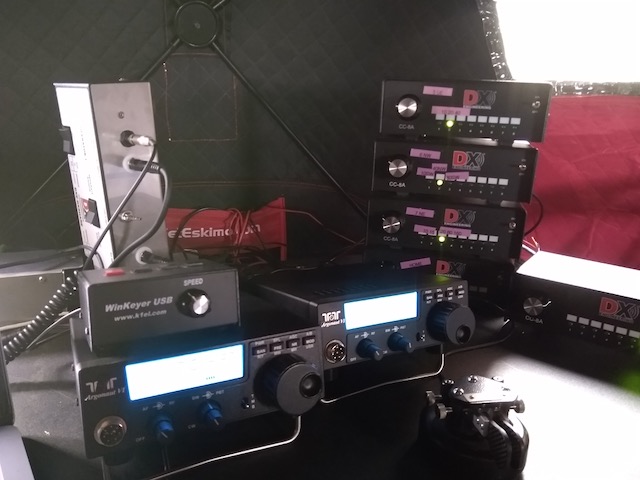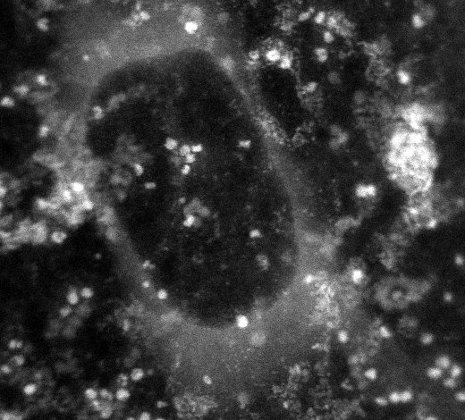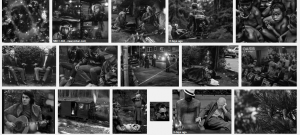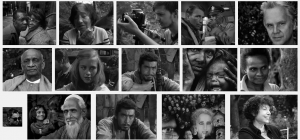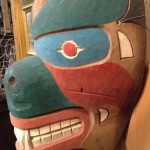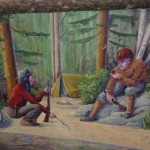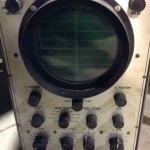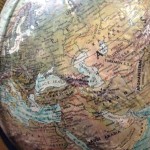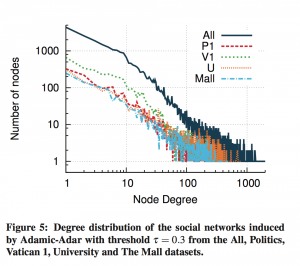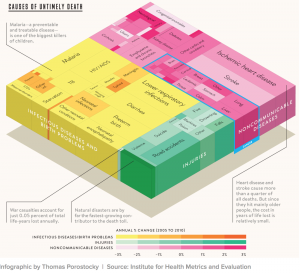Data visualization
Searching by image
Using Google’s search by image feature to return similar images
http://images.google.com/imghp?hl=en
With Google you can search by image. But it gets really interesting when you upload an image that is not available on the internet and look at the set of similar images returned. Or if you use a common image but just view the visually similar results. For example, here is a protein molecule (http://www.kurzweilai.net/images/ferritin.jpg)
Here are similar image results returned by Google.
You can also restrict the results to faces:
A few internet images to try:
- http://www.kurzweilai.net/images/cancer-to-bone-featured.jpg
- http://alien-ufo-research.com/reptilians/picture-of-reptilian-alien.gif
Signals from the Crowd
“Uncovering Social Relationships through Smartphone Probes”
By: Marco V. Barbera, Alessandro Epasto, Alessandro Mei, Vasile C. Perta, and Julinda Stefa Department of Computer Science, Sapienza University of Rome, Italy,
Using low level wiFi probe-request frames to sense devices and infer characteristics of people carrying those devices. They also use the PNL (preferred network list) to match people based on public SSID’s they have previously accessed.
http://conferences.sigcomm.org/imc/2013/papers/imc148-barberaSP106.pdf
Abstract
The ever increasing ubiquitousness of WiFi access points, cou- pled with the diffusion of smartphones, suggest that Internet every time and everywhere will soon (if not already has) become a re- ality. Even in presence of 3G connectivity, our devices are built to switch automatically to WiFi networks so to improve user ex- perience. Most of the times, this is achieved by recurrently broad- casting automatic connectivity requests (known as Probe Requests) to known access points (APs), like, e.g., “Home WiFi”, “Campus WiFi”, and so on. In a large gathering of people, the number of these probes can be very high. This scenario rises a natural ques- tion: “Can significant information on the social structure of a large crowd and on its socioeconomic status be inferred by looking at smartphone probes?”.
In this work we give a positive answer to this question. We or- ganized a 3-months long campaign, through which we collected around 11M probes sent by more than 160K different devices. Dur- ing the campaign we targeted national and international events that attracted large crowds as well as other gatherings of people. Then, we present a simple and automatic methodology to build the un- derlying social graph of the smartphone users, starting from their probes. We do so for each of our target events, and find that they all feature social-network properties. In addition, we show that, by looking at the probes in an event, we can learn important sociolog- ical aspects of its participants—language, vendor adoption, and so on.
What’s doing us in?
Causes of untimely deaths. Would make a nice set of blocks for children.
By Lee Simmons at wired.com
http://www.wired.com/wiredscience/2013/11/infoporn-causes-of-death/
Data mining
“The Elements of Statistical Learning: Data Mining, Inference, and Prediction”
By Trevor Hastie, Robert Tibshirani, and Jerome Friedman at Stanford
http://www-stat.stanford.edu/~tibs/ElemStatLearn/
What is data mining?
notes
A synopsis at UCLA
http://www.anderson.ucla.edu/faculty/jason.frand/teacher/technologies/palace/datamining.htm
MIT open courseware
http://ocw.mit.edu/courses/sloan-school-of-management/15-062-data-mining-spring-2003/index.htm
University of Texas
http://www.laits.utexas.edu/~anorman/BUS.FOR/course.mat/Alex/
CMU
Roll Your Own Front End
Data visualization programming tools
By Michael Edgecombe and Eric Micah
http://frontiernerds.com/strata-2012
http://vimeo.com/39536036
The shocking number of deaths caused by falling TVs
http://theweek.com/article/index/237878/the-shocking-number-of-deaths-caused-by-falling-tvs
Not to mention the lives ruined by actually watching TV.
10 hours of audio uploaded to SoundCloud every minute
By Martin Bryant in thenextweb.com
Like with Youtube, the inflow of information exceeds our ability to consume it.
The following clip was inserted by using the embed code from the thenextweb.com site and pasting it into the html editor.
